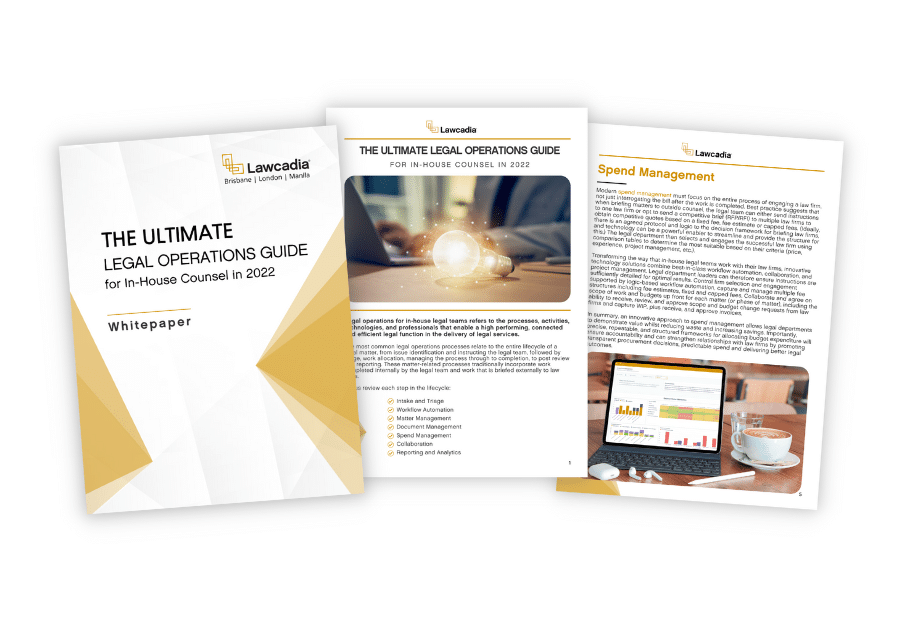To help in-house counsel navigate and improve the operations and performance of their legal function, Lawcadia have published a special whitepaper: “The Ultimate Legal Operations Guide for In-house Counsel in 2022“.
Legal operations for in-house legal teams refers to the processes, activities, technologies, and professionals that enable a high performing, connected and efficient legal function in the delivery of legal services. The most common legal operations processes relate to the entire end-to-end lifecycle of a legal matter, from issue identification and instructing the legal team, followed by triage, work allocation, and managing the process through to completion and reporting. These matter-related processes traditionally incorporate work completed internally by the legal team and work that is briefed externally to law firms.
Let us review each step in the lifecycle:
- Intake and Triage
- Workflow Automation
- Matter Management
- Document Management
- Spend Management
- Collaboration
- Reporting and Analytics
Intake and triage
Legal intake and triage refer to the process through which in-house legal teams receive and assign legal matters. In the in-house environment, legal intake is the process of receiving instructions from internal clients. At the same time, triage involves aligning the right people with the right task based on expertise and capacity. The overall goal of intake and triage is to enable in-house legal teams to delegate work appropriately, allocate resources and ensure the efficient delivery of services and/or the resolution of matters in a timely and cost-effective manner.
Automation capabilities and self-service systems effectively streamline and optimise the legal intake and triage process. In this way, in-house lawyers can be relieved of low-value and monotonous tasks and focus their attention on more strategic and valuable tasks.
Workflow automation
Legal workflow automation refers to using software to streamline the creation, approval and management of legal work or matters. In essence, legal workflow automation involves using technology to automate a process and create a repeatable, structured workflow. There are many areas workflow automation can be used in legal practice, such as legal intake, triage, matter management, contracts, briefing law firms, regulatory compliance, managing spend, RFPs, and more. Automating these processes enables legal professionals to work more efficiently, save time and reduce operational costs whilst keeping up with the increased pace and volume of business.
Workflow automation can reduce the time and cost of completing processes by 20% – 45%. A great place to start with workflow automation is identifying high-volume, repetitive, manual, and time-consuming tasks. For example, using technology to automate the receipt, approval, and delegation of legal requests from internal clients during intake and triage is an excellent opportunity to create standardised, consistent, and accountable workflows that help assign legal matters to their correct priority level. More advanced workflow automation can take this a step further by autonomously configuring tasks in the correct order, delegating to the right person, capturing and reporting on the critical data points, and even generating a document simply by creating or updating a matter.
To continue reading this whitepaper, download an unrestricted copy here.

